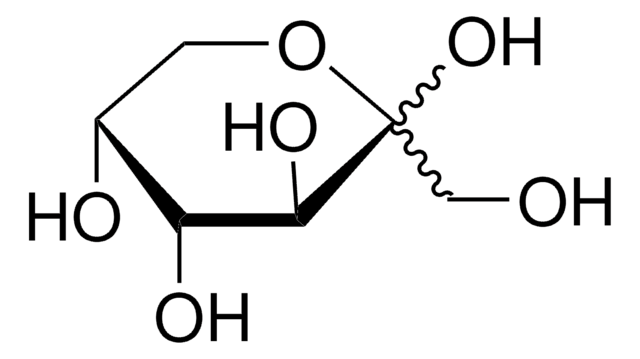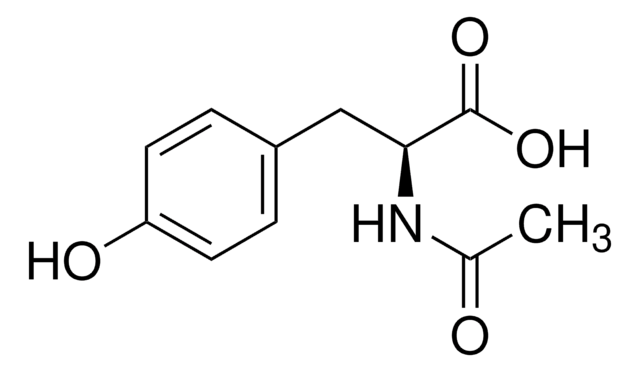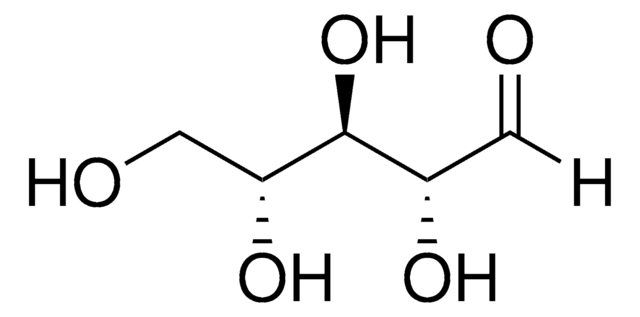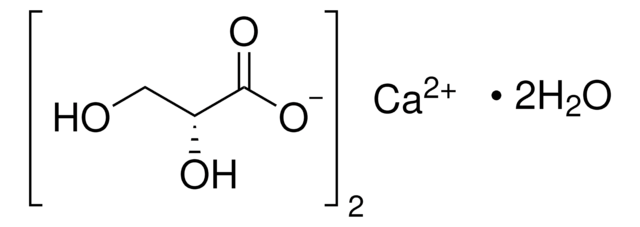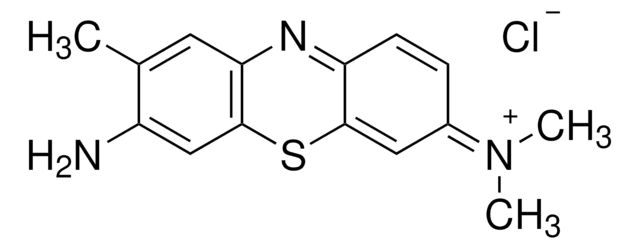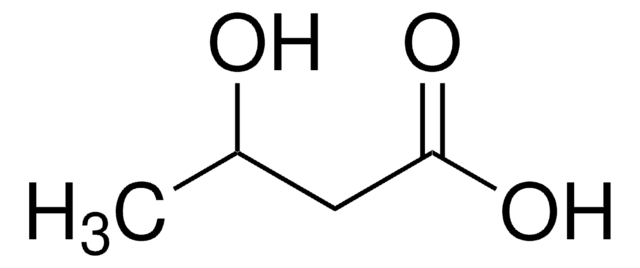All Photos(1)
About This Item
Linear Formula:
4-(HO)C6H4CH2CH(NHCOCH3)CO2H
CAS Number:
Molecular Weight:
223.23
Beilstein:
2697172
EC Number:
MDL number:
UNSPSC Code:
12352200
PubChem Substance ID:
Recommended Products
Assay
>99% (TLC)
mp
149-152 °C (lit.)
storage temp.
−20°C
SMILES string
CC(=O)N[C@@H](Cc1ccc(O)cc1)C(O)=O
InChI
1S/C11H13NO4/c1-7(13)12-10(11(15)16)6-8-2-4-9(14)5-3-8/h2-5,10,14H,6H2,1H3,(H,12,13)(H,15,16)/t10-/m0/s1
InChI key
CAHKINHBCWCHCF-JTQLQIEISA-N
Looking for similar products? Visit Product Comparison Guide
Storage Class Code
11 - Combustible Solids
WGK
WGK 3
Flash Point(F)
Not applicable
Flash Point(C)
Not applicable
Regulatory Information
新产品
Choose from one of the most recent versions:
Already Own This Product?
Find documentation for the products that you have recently purchased in the Document Library.
[Recording the delta-pH-generating biochemical reactions by light-addressed sensors with Ta2O5 dielectrics].
A N Reshetilov et al.
Doklady Akademii nauk, 342(5), 700-702 (1995-06-01)
Rakesh Kumar et al.
European journal of medicinal chemistry, 42(4), 503-510 (2006-12-26)
The development of type 2 diabetes in obese individuals is linked to lipid accumulation in non-adipose tissues. A series of N-acetyl-L-tyrosine derivatives were synthesized and evaluated for PPAR transactivation. Compounds 4d and 4f were found to show better PPARalpha transactivation
W Wang et al.
The Biochemical journal, 340 ( Pt 1), 329-336 (1999-05-07)
The formation of a reversible adsorption complex between a dimer of N-acetyl-L-tyrosine [di-(N-acetyl-L-tyrosine), (NAT)2] and horseradish peroxidase (HRP) compound II (CII) was demonstrated using a kinetic approach. A specific KIIm value (0.58 mM) was deduced for this step from stopped-flow
N-acetyl tyrosyluria caused by parenteral or enteral administration of N-acetyl-L-tyrosine: differentiation from hereditary and acquired tyrosinemias.
Stanley H Korman et al.
Journal of pediatric gastroenterology and nutrition, 39(1), 95-100 (2004-06-10)
L John Hoffer et al.
JPEN. Journal of parenteral and enteral nutrition, 27(6), 419-422 (2003-11-19)
N-acetyl-L-tyrosine (NAT) is commonly used in place of tyrosine in parenteral nutrition, but human studies carried out to date indicate considerable amounts of it are excreted unchanged in the urine. NAT retention has not been well studied in parenterally fed
Our team of scientists has experience in all areas of research including Life Science, Material Science, Chemical Synthesis, Chromatography, Analytical and many others.
Contact Technical Service